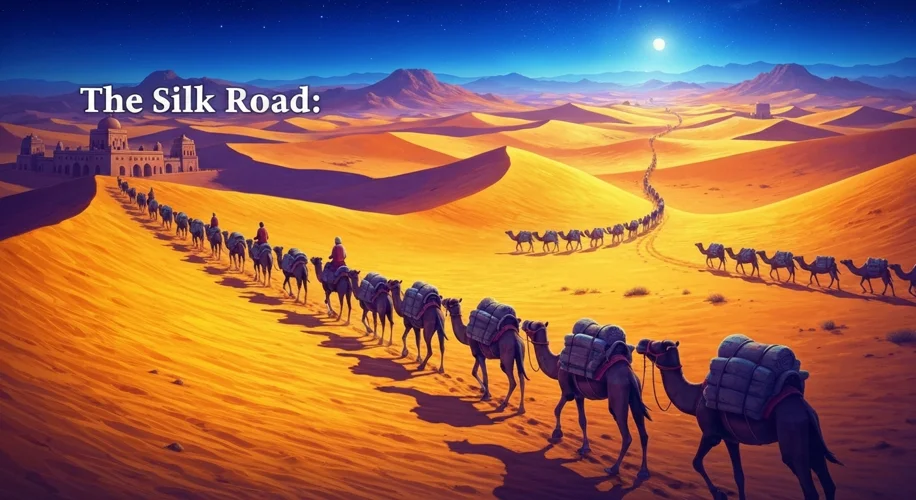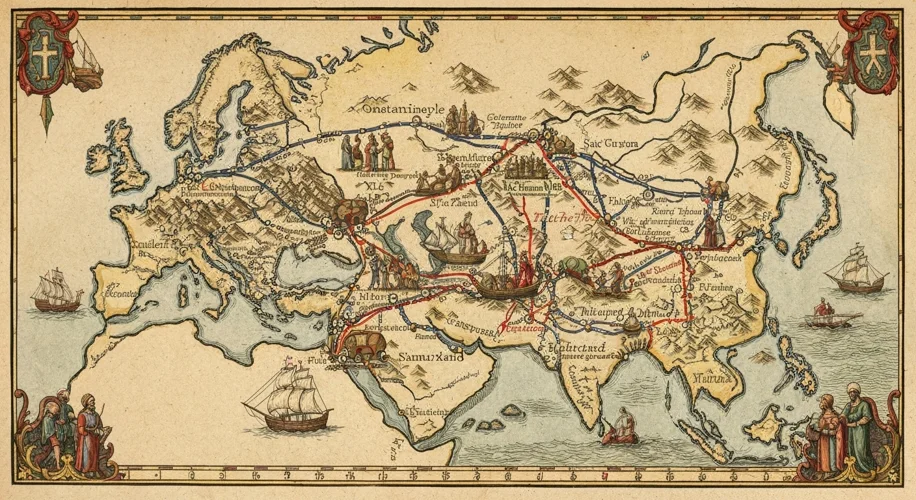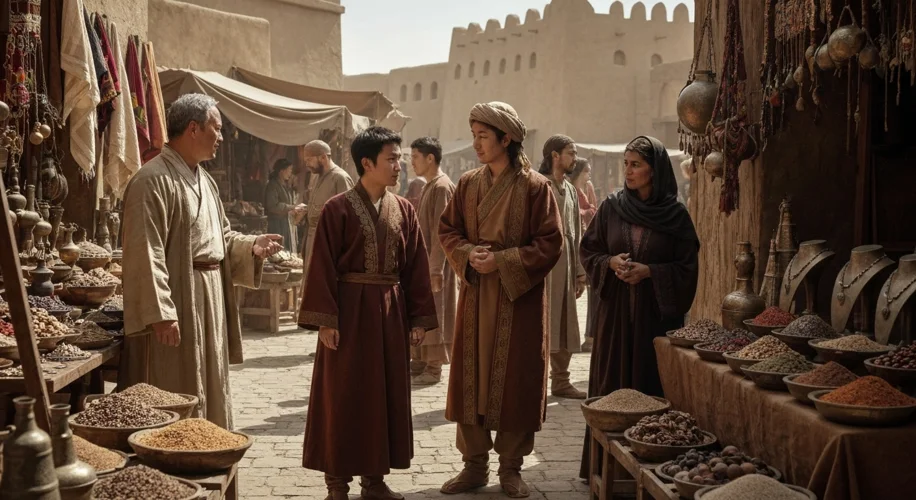Imagine a world before airplanes, before container ships, before the internet. How did ideas, goods, and people traverse vast continents? The answer lies in a legend whispered across millennia: the Silk Road. More than just a single path, it was a sprawling, dynamic network of trade routes that, for centuries, bound the East and West in a dance of exchange, fundamentally shaping the course of human civilization.
From roughly the 2nd century BCE to the mid-15th century CE, this ancient artery pulsated with life. It wasn’t paved with silk, nor was it a literal road in the modern sense. Instead, it was a web of caravan trails, sea lanes, and river routes, a fragile yet resilient thread weaving through deserts, mountains, and steppes. Picture this: a camel laden with shimmering silk, its handler squinting against the relentless sun, navigating the treacherous Taklamakan Desert. Nearby, perhaps, a merchant bartering for exotic spices, the air thick with the scent of unknown flora.

The genesis of this grand exchange can be traced to the Han Dynasty in China, around 130 BCE. Emperor Wu dispatched his envoy, Zhang Qian, on a mission to forge alliances against nomadic incursions. Though his diplomatic mission met with mixed success, Zhang Qian returned with tales of magnificent kingdoms to the west, of horses stronger than any China had seen, and crucially, of a burgeoning desire for Chinese goods, particularly silk.
Silk. The very word conjures images of luxury and exclusivity. For centuries, China held a near-monopoly on its production, a closely guarded secret that fueled its economic power. This lustrous fabric, soft yet strong, became the ultimate commodity, a symbol of status and wealth that captivated the Roman Empire and beyond. But the Silk Road was a two-way street, and what flowed east was just as transformative.
Gold, silver, precious stones, glass, wool, linen, horses, ivory, spices, fruits, and even exotic animals journeyed along these routes. Yet, the tangible goods were only part of the story. The Silk Road was a conduit for intangible treasures: ideas, technologies, religions, and philosophies. Buddhism, originating in India, spread eastward along these paths, eventually reaching China, Korea, and Japan, profoundly influencing their cultures. Nestorian Christianity and Manichaeism also found new adherents, while Islam, in its early centuries, expanded its reach across Central Asia.
Think of the intrepid travelers who braved these routes: Sogdian merchants, Persian traders, Roman emissaries, Buddhist monks, and countless unsung heroes. They faced sandstorms that could bury a caravan whole, bandits lurking in mountain passes, and the sheer, soul-crushing distance. Their lives were a testament to resilience and a thirst for the unknown, for profit, or for spiritual enlightenment.

The impact of the Silk Road reverberated through history. It facilitated the rise and fall of empires, from the Kushan Empire in Central Asia to the Mongol Empire, which, under its vast dominion, ironically revitalized and secured many of the Silk Road routes in the 13th century. It spurred innovation, as new techniques for papermaking, printing, and gunpowder technology gradually moved westward.
However, the Silk Road also carried darker cargo. Diseases, most notably the bubonic plague, the harbinger of the Black Death, traveled along these same pathways, decimating populations and irrevocably altering the social and economic landscapes of continents.

By the mid-15th century, the rise of maritime trade, spurred by European exploration, began to eclipse the overland routes. The Ottoman Empire’s control over key territories also disrupted the traditional flow. Yet, the legacy of the Silk Road endures. It stands as a powerful reminder of humanity’s innate drive to connect, to exchange, and to explore. It demonstrated that the movement of goods is inextricably linked to the movement of ideas, and that the world, even in antiquity, was far more interconnected than we might imagine. The Silk Road wasn’t just about silk; it was about the rich tapestry of human interaction that it wove across the globe, a tapestry whose threads can still be traced today.

